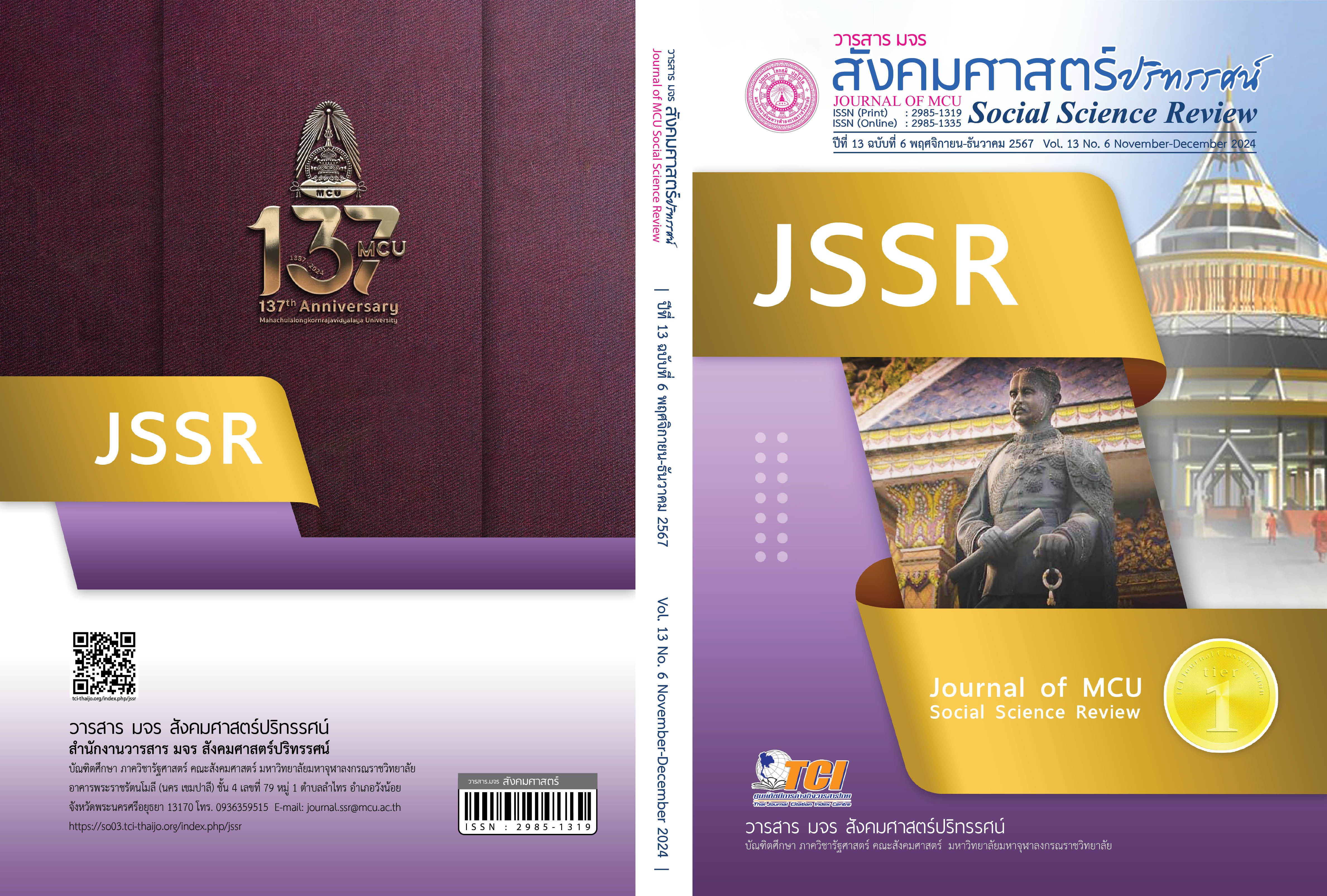THE COST ANALYSIS AND PROFIT PLANNING FOR TOEI PANAN PRODUCTS OF U-TAPAO CANAL COMUNITY, SONGKLA PROVINCE
Keywords:
Cost, Profit, Product from Toei PananAbstract
This research article aims to analyze the production costs, pricing strategies, and profit planning of community enterprise groups. The research methodology comprised a combination of quantitative research utilizing questionnaires and qualitative research employing structured interviews as a means for conducting in-depth interviews and small group meetings. The research participants consisted of members of the Ban Hua Non-Wat Toei Panan basketry community enterprise in Bang Klam District, Songkhla Province, with a purposive sample of 22 individuals selected. The quantitative research focuses on a descriptive analysis, while the qualitative data were subjected to content analysis. This involved a comprehensive examination of production cost data, the determination of appropriate selling prices, and a thorough analysis of initial profit margins and the break-even point.
The research outcomes revealed that among the 10 newly introduced products by Toey Panan, product type 7 incurred the highest production cost, totaling 337.90 baht. This was closely followed by product type 1, with production costs amounting to 333.48 baht, and product type 6 with production costs of 332 baht. On the other hand, the product with the most cost-effective production was found to be type 2, with production costs totaling 201.62 baht. In the calculation of the initial profit ratio, where the cost served as the foundation for setting the selling price, it was evident that product type 3 achieved the highest gross profit ratio at 48.54 percent. Following closely behind were product type 4 with a ratio of 48.33 percent and product type 6 with a ratio of 47.43 percent. Conversely, product type 8 recorded the lowest initial profit ratio at 36.21 percent. The analysis of the break-even point revealed that product type 7 has the most favorable position with the lowest break-even point, requiring only 15.88 units per month to cover costs. Following closely is product type 1, with a break-even point of 16.45 units per month, and product type 9, which required 16.73 units per month to break even. In contrast, product type 8 presented the highest break-even point, necessitating 26.09 units per month to reach the break-even stage.
References
กิ่งกนก รัตนมณีและคณะ. (2560). การศึกษาการคำนวณต้นทุนผลิตภัณฑ์ ของโครงการหนึ่งตำบลหนึ่งผลิตภัณฑ์ ในจังหวัดตรัง. วารสารการจัดการสมัยใหม่, 15(1), 75-84.
ดวงมณี โกมารทัต. (2559). การบัญชีต้นทุน (พิมพ์ครั้งที่ 15). กรุงเทพฯ: จุฬาลงกรณ์มหาวิทยาลัย.
ทิพวรรณ รัตนพรหม และคณะ. (2565). การวิเคราะห์ต้นทุนและผลตอบแทนของผลิตภัณฑ์กล่องซิปรอบจากกระจูดรายา : กรณีศึกษาวิสาหกิจชุมชนกลุ่มแปรรูปผลิตภัณฑ์กระจูด บ้านพรุกาบแดง 110/1 หมู่ที่ 7 ตำบลไพรวัน อำเภอตากใบ จังหวัดนราธิวาส เพื่อการกำหนดราคาขายที่เหมาะสม. สงขลา: มหาวิทยาลัยหาดใหญ่.
ผกามาศ บุตรสาล. (2565). การวิเคราะห์ต้นทุน ผลตอบแทน และอัตราส่วนทางการเงินจากการทอผ้าไหมมัดหมี่ของชุมชนบ้านมาบสมอ อำเภอเมือง จังหวัดบุรีรัมย์. วารสารชุมชนวิจัยมหาวิทยาลัยราชภัฏนครราชสีมา, 16(3), 111-123.
พรรณนิณิภา รอดวรรณะ. (2560). การบัญชีต้นทุน : หลักและกระบวนการ (พิมพ์ครั้งที่ 2). กรุงเทพฯ: จุฬาลงกรณ์มหาวิทยาลัย.
ภาวินีย์ ธนาอนวัช. (2563). การบริหารต้นทุนการผลิตและการวางแผนกำไรผลิตภัณฑ์ของวิสาหกิจชุมชน ตำบลบางนาร้า อำเภอบางปะหัน จังหวัดพระนครศรีอยุธยาเพื่อยกระดับเศรษฐกิจชุมชน. วารสารวิชาการมหาวิทยาลัยราชภัฏกาญจนบุรี, 9(1), 47-56.
ระริน เครือวรพันธุ์. (2560). การรายงานและวิเคราะห์งบการเงิน (พิมพ์ครั้งที่ 2). กรุงเทพฯ: โอเดี้ยนสโตร์.
ศิริวรรณ เสรีรัตน์ และคณะ. (2562). หลักการตลาด. กรุงเทพฯ: ธรรมสาร.
สมนึก เอื้อจิระพงษ์พันธ์. (2563). การบัญชีบริหาร (พิมพ์ครั้งที่ 3). กรุงเทพฯ: แมคกรอฮิล (ประเทศไทย).
อัจฉรา จันทร์ฉาย และศิพัตม์ ไตรอุโฆษ. (2562). การจัดทำแผนกลยุทธ์และแผนธุรกิจใหม่. กรุงเทพฯ: จุฬาลงกรณ์มหาวิทยาลัย.
Downloads
Published
How to Cite
Issue
Section
License
Copyright (c) 2024 Journal of MCU Social Science Review

This work is licensed under a Creative Commons Attribution-NonCommercial-NoDerivatives 4.0 International License.
In order to conform the copyright law, all article authors must sign the consignment agreement to transfer the copyright to the Journal including the finally revised original articles. Besides, the article authors must declare that the articles will be printed in only the Journal of MCU Journal of Social Sciences. If there are pictures, tables or contents that were printed before, the article authors must receive permission from the authors in writing and show the evidence to the editor before the article is printed. If it does not conform to the set criteria, the editor will remove the article from the Journal without any exceptions.





